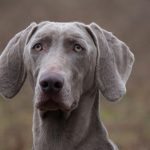Cold Weather Shooting
By Steve Smith
The onset of winter, when the seasons are still open but you sort of, you know, wish they weren’t, presents a set of circumstances for the wingshooter quite apart from the early days of autumn, and not even in the same solar system as what you experienced at the gun club practicing for the season.
A variety of factors conspire to make shooting, hitting, and killing cleanly more problematic, and the problems compound as the seasons wind to their close. Let’s take a look at some.
The Birds
Just like first-year football players in the Super Bowl are not considered rookies, there are no juvenile birds the last couple weeks of the season. Those that are still around hid right, flew right, ate right, and evaded right. They beat predators and hunters ever since they were hatched. In effect, all that are around are old, shy, experienced birds and young, shy, experienced birds. In most cases, they will run – regardless of the species – flush wild, not cooperate with the dog, and spend precious little time feeding, where they may be exposed to danger. They did not make it this far being stupid or unlucky.
Because of all this, these birds have gravitated to the thickest cover they could find, the stuff easy for them to hide in, and miserable for you and your dog to hunt in (tell me again why we’re doing this when the NFL season is down to the final weeks).
In order to roust them out, you have to go in there after them – find the thickest stuff you can find, and make a lot of tracks through it.
The Gear
You have to stay alive out there, which means relatively warm, which means clothing – more of it than you wore in the early season. You’re bulked up, and your gun fit changes. The extra bulk slows you a bit, at the time when birds are flushing at extreme range and you can use every nanosecond to get with it.
In addition, shotgun shells lose their efficiency – velocity – when they get cold; up to 40 percent can be lost, so your killing range is more restricted than it was a few weeks ago. So, again, you have to be on them quickly – or adjust.
In order to give yourself more time and extend your range, screw in chokes at least one degree tighter than you used in the early season; an IC choke before may need to become a M or even a F now.
The Dog
I don’t have to tell you that an out-of-control dog is going to spoil everything. And the definition of “out of control” changes as the season advances. Since you’ll be in thick cover, thicker than you were weeks back, the dog has to restrict his range even more to keep in contact with you. Also, a dog that is out a little too far (which may only be his normal, early season range) may flush those nervous birds prematurely. In the early season, a dog working at, say, 40 yards may be just right in moderate cover with young birds; later, he may need to stay closer to 25 or 30 – especially if you only see him now and then.
Use the wind to the dog’s – and your – advantage. It brings him scent and helps mask the noise you make. Speaking of which, keep your mouth shut and your whistle in the truck – your voice and other hunter-generated sounds will spook more birds than the dog will. And it’s pretty plain that over the last decade or so, pheasants have learned what blaze orange means – they don’t need to hear you; seeing you is enough. Keep out of sight as much as and as long as you can.
Keep the dog closer as the cover gets thicker, try not to make any noise at all, and use the wind.
Here’s a somewhat disturbing but useful thought: How would you go about hunting a piece of cover if you were hunting people? You’d make sure you didn’t do anything to alert them, you’d approach from downwind, stay as silent as possible, come armed appropriately for the job, and try to get as close as possible before they knew you were there.
This is hardly any different.



